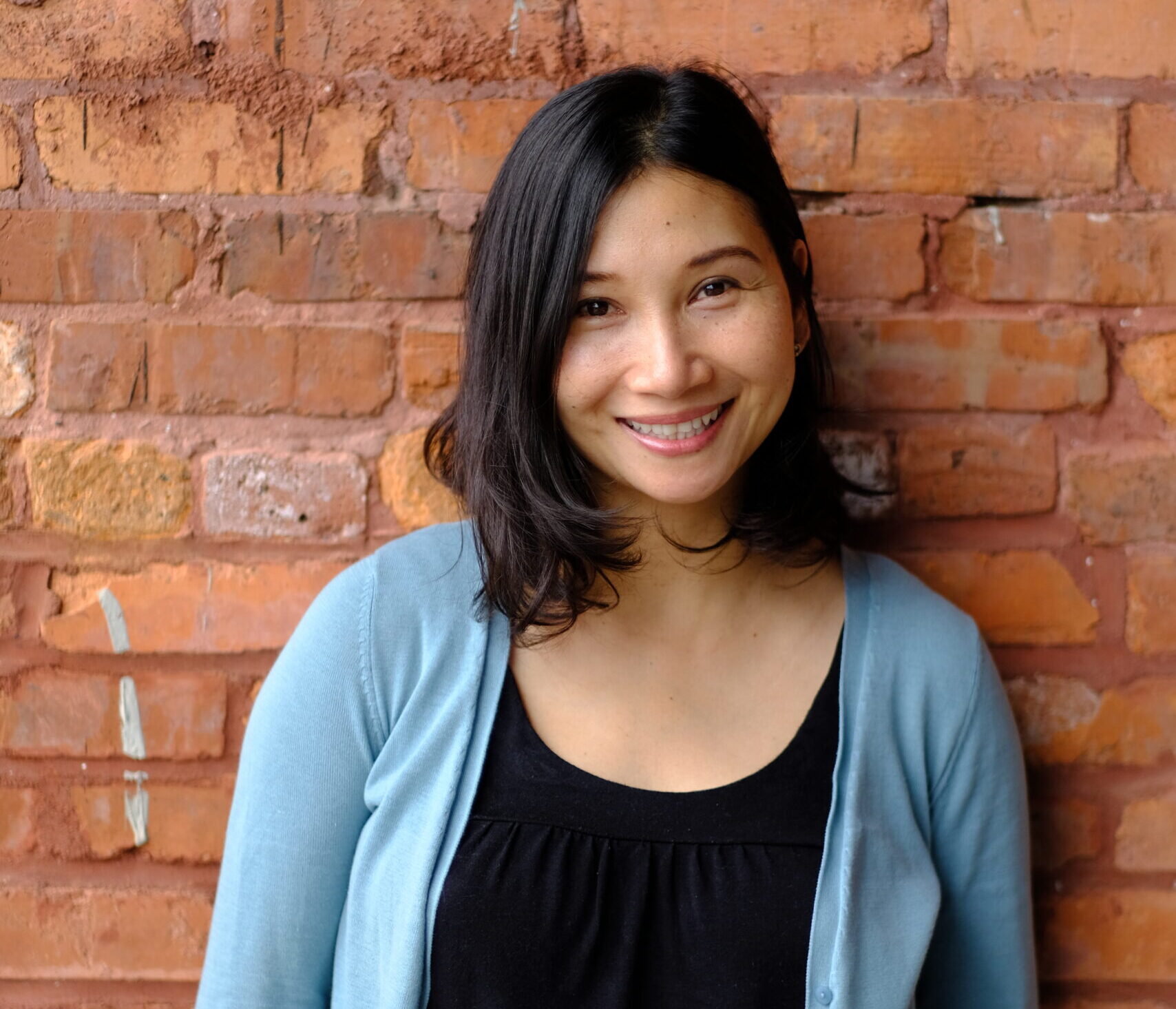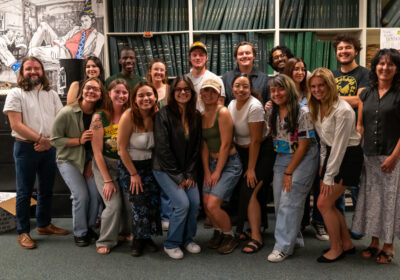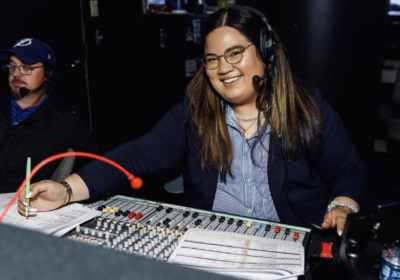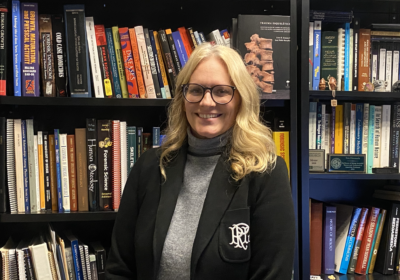Diversity making a difference: Chadaphan Hanwisai establishes her presence as a woman in architecture

This story is part of a continuing series that features leaders at USF during Asian American and Pacific Islander Heritage Month.
Drawing pictures of castles and cathedrals in her fifth-grade art classroom cultivated Campus Planning Manager and adjunct professor Chadaphan Hanwisai’s passion and desire to create.
Hanwisai, known as Chaddy to friends, students and colleagues, began creating art in her class with Mr. Ridley, her fifth grade teacher, when she lived in England.
“He really incorporated art into everything that he taught us. I mean, he also was our math teacher and we would find ourselves painting a mural with our answers,” Hanwisai said.
England was home to Hanwisai, her mom and sister for five years as she completed elementary school and middle school. When her sister married a man in the U.S. Air Force, her family moved to the states, where she completed high school.
Art and French were her primary passions entering college, and Hanwisai didn’t plan on majoring in architecture until taking Introduction to Architectural Design/Graphics 1 with associate professor Steven Cooke at USF.
“[He] was such an amazing teacher and just the way that he would deliver his class, his knowledge about architecture and his passion about architecture just really made me fall in love with the whole entire idea of architecture, drawing and designing,” Hanwisai said.
After graduating college, she earned a job working at Curts Gaines Hall Jones Architects, a private company that focuses on high rise condominiums. However, the 2009 housing recession impacted the industry so severely that she returned to USF for employment.
As campus planning manager, she deals with the campus master plan, primarily at the Tampa campus, but also at St. Pete, Sarasota-Manatee and the Keys Marine Lab. The campus master plan is the vision and design approach for the physical environment that offers a diverse and dynamic campus community, according to Hanwisai.
“I enjoy the different aspects of what I have to do. There’s a lot of problem solving with what I’m doing,” she said. “Every day, it’s a brand new thing that we have to solve, so it makes it go by fast and it’s challenging.”
The campus planning manager position requires her to look at things realistically, while the professor position is more conceptual and allows her to think outside of the box. The two provide a balance for each other, according to Hanwisai.
Being a professor also enables her to stay updated with concepts and learn from her students, she said, allowing her to use knowledge from her professor position in her campus planning manager job.
One of her previous students, Logan Desaulniers, a School of Architecture and Community Design (SACD) alum, also worked alongside her as an intern at USF Facilities Planning.
“[Hanwisai] has taught me things varying from basic alignment in design to AutoCAD [Computer-Aided Design] skills when working on the master plan for the different USF campuses,” Desaulniers said. “Having her as a teacher and then a boss gave me the opportunity to understand how the architecture field operates on a scholarly and practical level.”
In his first few weeks of studying architecture, he considered dropping the major. Hanwisai pulled him aside and encouraged him to stick with it for the rest of the semester before making a decision, according to Desaulniers.
After that semester, he decided to stick with it and graduated this spring, and he said he can’t picture himself doing anything else.
Teaching the first undergraduate design course for the program, Hanwisai has one of the hardest classes to teach, according to SACD Director Robert MacLeod.
“It is like learning a new language while learning how to make complex drawings and models. It is a deep dive for students and teaching this successfully takes a special kind of educator,” MacLeod said. “I call her ‘the horse whisperer of architecture.’ She has a magical talent with beginning students.”
The school and MacLeod himself can feel her impact each semester as the next class of her students joins the school and starts the program, according to MacLeod. She is always available to answer questions and engage in conversation.
A major challenge Hanwisai has faced when establishing her presence in the field is that architecture is typically predominantly male, she said, so being an Asian American woman has presented her with challenges when growing in the field.
“I think females are becoming more and more important in this role,” Hanwisai said. “With my experience, it was just really having the passion for what I do and going above and beyond what is always asked of me in my position and that’s one way of proving that I’m able to do the task that is set forth for me.”
While the pandemic didn’t bring many challenges to her project manager position, her job as a professor grew more difficult. Hanwisai teaches Introduction to Architectural Design/Graphics 1, a studio class where face-to-face instruction is essential, she said.
Typically teaching one studio at a time, her class was split into two studios during the pandemic, which added more time and effort to her teaching responsibilities in addition to her full-time job.
“[I admire] her efficiency. She is able to seamlessly transition her day going from a full-time campus planner to professor and then mother all in a couple of hours,” colleague and civil engineer Richard Piccininni said.
The pandemic taught her to appreciate things close to her and spend more time with her family. Her main hope for her daughters is that they grow up to be strong women, according to Hanwisai.
Regardless of the challenges she has faced, from determining what major she wanted to pursue in college to establishing herself in the field and growing her family, Hanwisai has made many strong connections with her colleagues, students and has an impact on all those around her, according to Piccininni.
Each semester Hanwisai’s knowledge and experience in architecture grows along with her students’, she said. Hanwisai also said she looks forward to continuing to teach more classes for beginning architecture students and working on more projects for the university.
“I am grateful and fortunate that my career has presented many opportunities and taught me many things,” Hanwisai said. “In addition, each semester I get to meet amazing students who share the same passion as me.”








